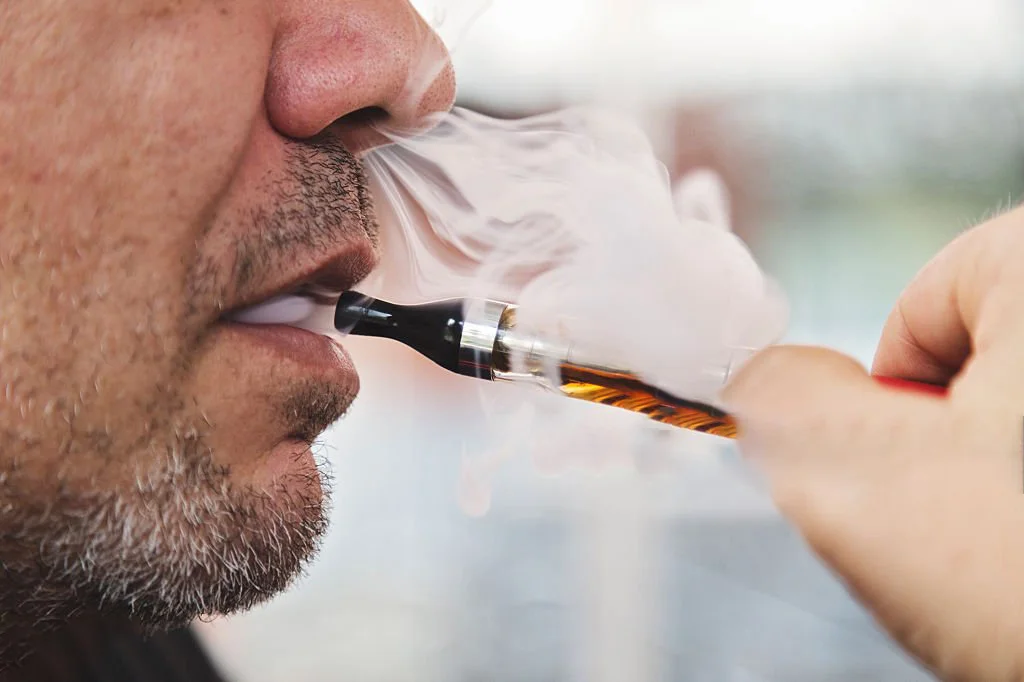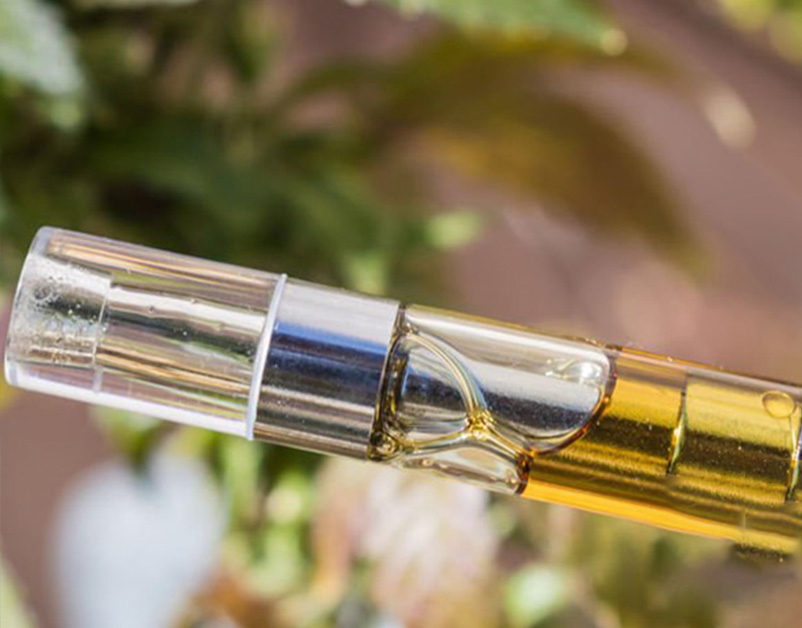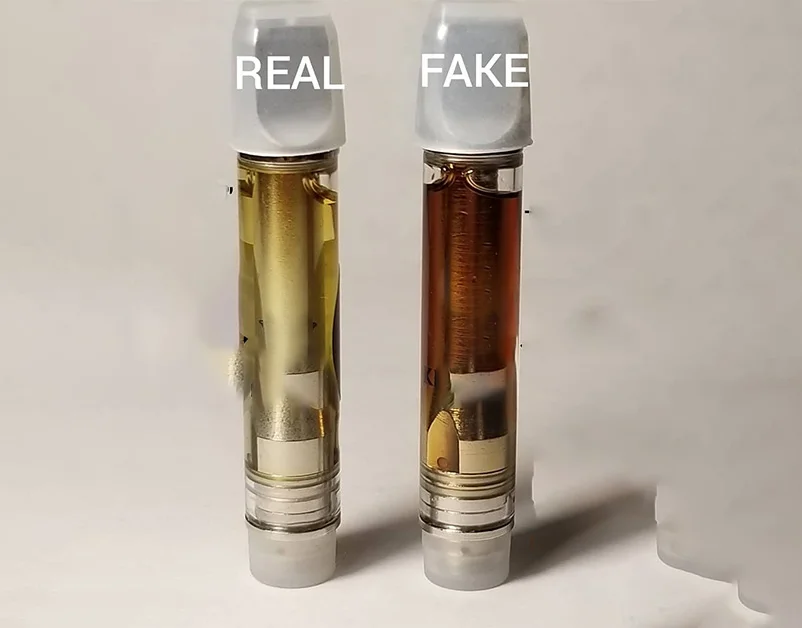How to Tell If Your Cart Is Fake: 8 Red Flags to Watch For

The vape cart market is booming—especially with the rising popularity of cannabis and hemp concentrates.
But with this explosion in popularity comes a dangerous downside: counterfeit vape cartridges.
Fake vape carts are flooding the market, often looking nearly identical to trusted brands, making it extremely hard for consumers to tell the difference.
Worse yet, they can pose serious health risks due to unregulated ingredients and harmful additives.
In this guide, you’ll learn how to spot a fake cart, why it’s important to know the difference, and what you can do to protect yourself.
What Is a Vape Cart?

A vape cart (short for vape cartridge) is a small, typically glass container filled with cannabis or hemp oil.
It’s most commonly used with a 510-thread battery, which heats the oil and converts it into vapor.
Most vape carts are designed to be disposable or replaceable and come pre-filled with THC, CBD, or Delta-8 concentrates.
Key features of a real vape cart:
Transparent or windowed body to see the oil level
Sealed mouthpiece
Branded packaging with batch info and QR code
What Is a Fake Cart?

A fake cart is a counterfeit nicotine or concentrate cartridge designed to mimic the appearance of popular brands but without meeting the same quality or safety standards.
These carts are typically produced by black market manufacturers operating in uncontrolled environments—often garages or makeshift labs—with no regulatory oversight.
While it may look like an authentic product, the oil inside the cartridge may contain harmful additives that are unsafe for consumption.
The most commonly known one is vitamin E acetate, which can cause a range of damage to the lungs.
Fake cartridges can be appealing because they're usually sold at a lower price, but the health risks far outweigh the savings.
How to Tell If Your Cart Is Fake: 8 Key Warning Signs
1. Check the Packaging
Real THC vape carts must meet strict packaging standards. Check for:
State-compliant warning labels and symbols
Valid license number
Batch or lot number
Clear manufacturing and packaging dates
Pro tip: Look closely for spelling mistakes, blurry logos, or inconsistent formatting—these are common signs of counterfeits.
2. Scan the QR Code
Legitimate vape brands include a QR code on their packaging. When scanned, it should direct you to:
A Certificate of Analysis (COA)
Product verification details
A serial number matching the brand’s official site
If the QR code leads nowhere, it’s almost certainly a fake.
3. Beware of Unrealistically Low Prices
If a cart is selling far below market value, that’s a huge red flag. Authentic vape cartridges are more expensive due to:
High-quality cannabis extraction
Certified lab testing
Licensed manufacturing and distribution
Fake carts cut corners to lower costs—but at the expense of your health.
4. Examine the Oil Consistency
Flip the cart upside down and watch how the oil moves:
Real carts have thick, slow-moving oil with uniform texture
Fake carts often contain runny, watery oil or visible bubbles
Thin oil may be the result of cutting agents or dangerous fillers.
5. Inspect the Oil Color
Color can indicate oil quality:
Legit carts: Clear golden or light amber
Fake carts: Dark brown, orange-tinted, or murky
Avoid any cart with unnatural or dirty-looking oil.
6. Unusual Taste or Smell
Trust your senses. A real vape cart should taste like cannabis or added terpenes. If you notice:
Burnt or metallic taste
Chemical aftertaste
Unnaturally sweet flavors
Avoid carts with no aroma, sharp chemical odors, or a burnt aftertaste.
7. Side Effects After Use
Using fake vape carts can have serious adverse effects. Here are common symptoms reported by users after vaping counterfeit cartridges:
Headaches
Memory issues or “brain fog”
Throat irritation or sinus problems
Lung pain or discomfort
Back pain
Respiratory damage or difficulty breathing
In 2019, vitamin E acetate in fake carts led to hundreds of hospitalizations during the EVALI crisis. Don’t ignore unusual effects after vaping.
8. No Verified Lab Test (COA)
Every legal cart must include a Certificate of Analysis, which shows:
THC/CBD potency levels
Pesticide and heavy metal screening
Solvent residual testing
Lab name and testing date
Warning: Some fake carts come with forged COAs. Cross-reference the lab license via your state’s cannabis control board.
How to Avoid Fake Carts?
To avoid buying fake carts, consider the following:
Buy from Licensed Dispensaries Only: Stick to legal storefronts or verified delivery services that are licensed by your state.
Certificate of analysis (COA): Every legal vape cart should include a COA, proving it’s been lab-tested for potency and harmful substances like pesticides and heavy metals. Always check it to confirm safety.
Brands: It is best to only purchase products from reputable brands that are transparent about their third-party laboratory testing.
Packaging: Make sure the packaging of a new cart isn’t tampered with.
Price: Don't be tempted to buy an extremely cheap vape cartridge.
Trust Your Instincts: If the oil looks weird, the packaging is off, or the price is suspiciously low—walk away.
Final Thoughts
Identifying a fake cart is a crucial step in protecting your health.
Always buy from licensed dispensaries or reputable retailers, and never ignore the warning signs.
From packaging inconsistencies to suspicious oil color and weak effects, staying informed can help you avoid counterfeit products and potentially serious health consequences.
Read Related: Best 510 Thread Battery for Cartridges
